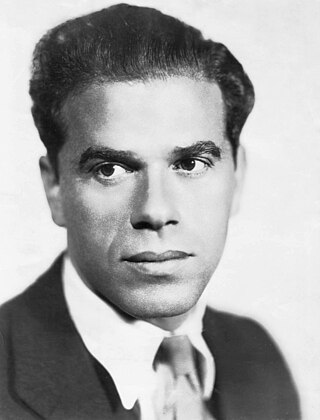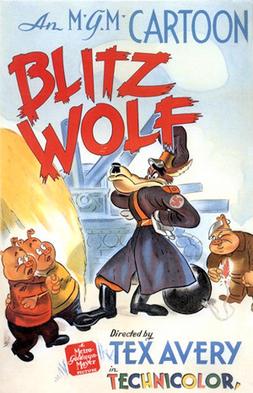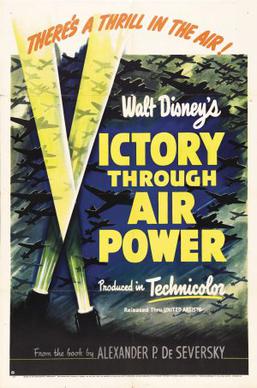Related Research Articles

Frank Russell Capra was an Italian-American film director, producer, and screenwriter who was the creative force behind several major award-winning films of the 1930s and 1940s. Born in Italy and raised in Los Angeles from the age of five, his rags-to-riches story has led film historians such as Ian Freer to consider him the "American Dream personified".

Why We Fight is a series of seven propaganda films produced by the US Department of War from 1942 to 1945, during World War II. It was originally written for American soldiers to help them understand why the United States was involved in the war, but US President Franklin Roosevelt ordered distribution for public viewing.

Operation Downfall was the proposed Allied plan for the invasion of the Japanese home islands near the end of World War II. The planned operation was canceled when Japan surrendered following the atomic bombings of Hiroshima and Nagasaki, the Soviet declaration of war, and the invasion of Manchuria. The operation had two parts: Operation Olympic and Operation Coronet. Set to begin in November 1945, Operation Olympic was intended to capture the southern third of the southernmost main Japanese island, Kyūshū, with the recently captured island of Okinawa to be used as a staging area. In early 1946 would come Operation Coronet, the planned invasion of the Kantō Plain, near Tokyo, on the main Japanese island of Honshu. Airbases on Kyūshū captured in Operation Olympic would allow land-based air support for Operation Coronet. If Downfall had taken place, it would have been the largest amphibious operation in history, surpassing D-Day.

The Sportpalast speech or Total War speech was a speech delivered by German Propaganda Minister Joseph Goebbels at the Berlin Sportpalast to a large, carefully selected audience on 18 February 1943, as the tide of World War II was turning against Nazi Germany and its Axis allies. The speech is particularly notable as Goebbels almost mentions the Holocaust, when he begins saying "Ausrotten", but quickly changes it to "Ausschaltung". This was the same word Heinrich Himmler used on 18 December 1941, when he recorded the outcome of his discussion with Adolf Hitler on the Final Solution, wherein he wrote "als Partisanen auszurotten".

The United States Office of War Information (OWI) was a United States government agency created during World War II. The OWI operated from June 1942 until September 1945. Through radio broadcasts, newspapers, posters, photographs, films and other forms of media, the OWI was the connection between the battlefront and civilian communities. The office also established several overseas branches, which launched a large-scale information and propaganda campaign abroad. From 1942 to 1945, the OWI reviewed film scripts, flagging material which portrayed the United States in a negative light, including anti-war sentiment.

Prelude to War is the first film of Frank Capra's Why We Fight film series commissioned by the Office of War Information (OWI) and George C. Marshall. It was made to educate American troops of the necessity of combating the Axis powers during World War II based on the idea that those in the service would fight more willingly and ably if they knew the background and the reason for their participation in the war. The film was later released to the general American public as a rallying cry for support of the war.
Know Your Enemy: Japan is an American World War II propaganda film about the war in the Pacific directed by Frank Capra, with additional direction by experimental documentary filmmaker Joris Ivens. The film, which was commissioned by the U.S. War Department, sought to educate American soldiers about Japan, its people, society and history, and its totalitarian militaristic government. However, the film never realized its full purpose because its completion was delayed by disputes between Hollywood and Washington, and the abrupt end of the Pacific War soon after the film's release in August 1945. The film's first public screening was in 1977 as part of a PBS special.

December 7th is a 1943 propaganda documentary film produced by the US Navy and directed by Gregg Toland and John Ford, about the December 7, 1941 attack on Pearl Harbor, the event which sparked the Pacific War and American involvement in World War II. Toland was also the film's cinematographer and co-writer. The original version of this film, with a running time of 82 minutes, was not released but was retained by the National Archives. An edited version of 32 minutes length, which removed a long introductory segment and a shorter epilogue, was given limited release to specific audiences but won the Academy Award for Best Documentary in 1944. This is the only film Toland ever worked on for which he received a director credit.

Gracias Amigos was a 1944 propaganda short produced by the Office of the Coordinator of Inter-American Affairs to educate the American public about the contributions of Latin America during World War II.
The Town is a short propaganda film produced by the Office of War Information in 1943. The documentary, depicting the American Midwestern city of Madison, Indiana was filmed by Josef von Sternberg in 1943 and released in 1945.

Blitz Wolf is a 1942 American animated propaganda short film produced and distributed by Metro-Goldwyn-Mayer. A parody of the Three Little Pigs told via a World War II perspective, the short was directed by Tex Avery and produced by Fred Quimby. It was nominated for the Academy Award for Best Short Subject: Cartoons but lost to Der Fuehrer's Face, another anti-Nazi World War II parody featuring Donald Duck.

During American involvement in World War II (1941–45), propaganda was used to increase support for the war and commitment to an Allied victory. Using a vast array of media, propagandists instigated hatred for the enemy and support for America's allies, urged greater public effort for war production and victory gardens, persuaded people to save some of their material so that more material could be used for the war effort, and sold war bonds.

Britain re-created the World War I Ministry of Information for the duration of World War II to generate propaganda to influence the population towards support for the war effort. A wide range of media was employed aimed at local and overseas audiences. Traditional forms such as newspapers and posters were joined by new media including cinema (film), newsreels and radio. A wide range of themes were addressed, fostering hostility to the enemy, support for allies, and specific pro war projects such as conserving metal and growing vegetables.
Between 1941 and 1945, during World War II, Walt Disney and his company were involved in the production of propaganda films for the U.S. government. The widespread familiarity of Disney's productions benefited the U.S. government in producing pro-American war propaganda in an effort to increase support for the war.
The following outline is provided as an overview of and topical guide to World War II:
Tuesday in November was a propaganda short about the 1944 United States presidential election produced by the Office of War information for overseas distribution. It is meant to explain how the democratic process in America works.

The Fight for the Sky is a short propaganda film commissioned by the US government to highlight the victories of the Allied air forces over Europe prior to the Normandy invasion.

Listen to Britain is a 1942 British propaganda short film by Humphrey Jennings and Stewart McAllister. The film was produced during World War II by the Crown Film Unit, an organisation within the British Government's Ministry of Information to support the Allied war effort. The film was nominated for the inaugural Academy Award for Best Documentary Feature in 1943, but lost against four other Allied propaganda films. It is noted for its nonlinear structure and its use of sound.
Christmas Under Fire is a 1941 British short documentary film directed by Harry Watt for the Crown Film Unit of the Ministry of Information. It was conceived as propaganda primarily for an American audience, to raise support for the Allied cause during the Second World War. Produced in the context of German bombings of British cities, it depicts the resilience of British civilians despite the hardships they suffered during the 1940 Christmas, by showing the continuation of Christmas traditions in the face of the disruptions caused by war. The film is a sequel to London Can Take It!, with the same narrator, Quentin Reynolds. It was nominated for an Academy Award for Best Documentary Short, which was won by Churchill's Island.

Victory Through Air Power is an American animated documentary propaganda film produced by Walt Disney Productions and released by United Artists on July 17, 1943. It is based on the 1942 book Victory Through Air Power by Alexander P. de Seversky. De Seversky appeared in the film, an unusual departure from the Disney animated feature films of the time.
References
- ↑ "Preserved Projects". Academy Film Archive.
- ↑ "Academy War Film Collection". Academy Film Archive.